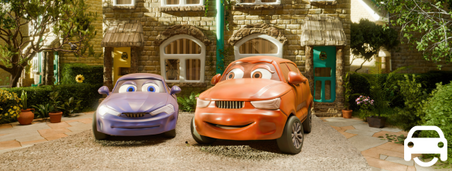Vehicle Theft Is On The Rise: How To Protect Your Car

A new study from AX Track shows vehicle theft is up nearly 30% from 2020, with some areas of the UK experiencing levels exceeding pre-pandemic rates. Vehicle theft increased by 23.9% from 2021 to 2022 and in 2019 theft had already risen by 45% since 2014.
London and the West Midlands had the highest levels in the UK in 2022 with 32,766 and 12,429 thefts reported. Other regions including Hampshire, Devon & Cornwall, Kent, Humberside, West Midlands, Northumbria and Staffordshire, saw increases of more than 50% from 2020 to 2022.
The significant rise in used car prices could have a part to play in the increased number of vehicle thefts, making it far more profitable for criminals than ever before. Cars are often stolen to order with high-value models being the most likely to be targeted.
Vehicles can be sold as complete cars but can also be broken down and sold for parts in the UK or overseas. Whilst vehicle theft can be highly profitable for those doing the stealing, for owners, it’s a costly, time consuming process to recover the vehicle or be reimbursed for the value of the car. So, what can you do to prevent your car from being stolen?
How to protect your car from vehicle theft?
Vehicle theft is becoming more high-tech as modern cars have technological weaknesses that can be targeted to gain access to the car. Keyless entry systems can be fooled by cloning the key signal and transmitting it from a different device to open the car. This requires no physical damage to break into a car and start it.
For cars with keyless entry, keep the keys away from doors and windows to maximise the distance between the signal and potential thieves. But it’s always advisable to keep your keys out of sight anyway, to prevent someone breaking in to take them. Keyless entry fobs can also be kept in protective bags to block the signal from being cloned.
Immobilisers can be fitted as a last line of defence if someone does gain access to the vehicle. This would stop them from starting the car and driving away in it. Unlike keyless fobs that emit a signal, immobilisers are undetectable in this way and have no installation trace meaning you couldn’t see if a car was fitted with one or not. It’s also a good idea to fit a tracker to help recover the vehicle if it is stolen.
Alternatively, low-tech solutions like steering wheel locks and wheel clamps could be cheaper options. As modern vehicle theft now relies on software and computers, it’s less likely thieves would carry the necessary tools to disable these physical theft prevention measures.
With vehicle theft on the rise, it’s important to make sure you have the right insurance in case the worst happens.
What is GAP Insurance and why do I need it in case my car gets stolen?
GAP insurance stands for Guaranteed Asset Protection and protects against financial loss if your car is declared a total loss or write off by your insurer. When a vehicle is stolen, your insurer will pay out the current market value of the car. But as soon as you drive off the forecourt its value depreciates. This means if your new car gets stolen a week after you brought it home, your insurer wouldn’t necessarily pay out the price you paid for it. GAP insurance covers the difference between the price you paid for the car and its current market value. It can be thought of as covering the ‘gap’ to obtain sufficient funds to replace the car with a like-for-like example.
MotorEasy offers three types of GAP insurance to make sure you are able to replace your vehicle if it’s stolen.
New Car GAP Insurance: If you buy a car with under 500 miles on the clock you could qualify for Vehicle Replacement Insurance (VRI). This type of GAP insurance covers the difference between your insurer’s payout and how much it would cost to replace the vehicle, even if the retail price has spiked in the meantime.
Nearly New Car GAP Insurance: This is for owners with cars up to seven years old or with 80,000 miles who have bought their car from a dealership in the last four months. It covers you up to the total invoice paid for the car.
Used Car GAP Insurance: Privately purchased vehicles only qualify for this kind of GAP insurance, which covers the car up to its value when the policy began. The value is established using dedicated price guides to get the most accurate estimate.
Taking out a GAP insurance policy also helps to cover the cost of outstanding finance including balloon payments and interest fees if the vehicle was purchased using PCP (Personal Contract Purchase). To find out more about this type of insurance, read MotorEasy's GAP Insurance Guide.





